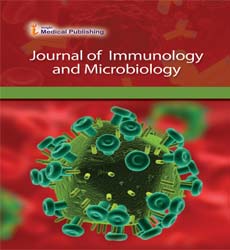Identification of TEM, CfxA, TetM and TetQ genes in periodontic infections
Abstract
IPeriodontitis is one of the most common diseases in dentistry. Black-pigmented, gram negative oral anaerobes such as Porphyromonas gingivalis and Prevotella intermedia are thought to be pathogens in adult periodontitis. Antibiotherapy is usually needed in the treatment of periodontitis, but treatment is often inappropriate leading to bacterial resistances, a serious problem in dental practice. Consequently, identification of resistance genes in these microorganisms is crucial, to allow prescription of specific antibiotics. This study identified bacterial species by PCR as well as their antibiotic resistances. Identification of Porphyromonas gingivalis and Prevotella intermedia was performed according with Ashimoto, et al. (1996). Identification of TetM, TetQ and TEM genes was done according with Koukos, et al. (2014) and the CfxA gene according with Handal, et al. (2005). Prevotella intermedia represented 44% and Porphyromonas gingivalis 20% of total isolates. Remaining 36% strains belonged to other black-pigmented species. Concerning the antibiotic resistance genes, it was seen that 8% of isolates had one of the tetracycline resistance genes (TetQ or TetM). CfxA gene was detected in 2% and TEM gene in 30% of strains. Strains with tetracycline (TetQ or TetM) resistance genes also harboured the TEM gene. Prevotella sp. was the most prevalent bacterial species found in periodontic infections, as expected. Most strains (64%) with the TEM gene were identified as P. intermedia and only 7% of identified P. gingivalis had one of the analyzed resistance genes. No tetracycline resistance gene was observed in P. gingivalis strains
Open Access Journals
- Aquaculture & Veterinary Science
- Chemistry & Chemical Sciences
- Clinical Sciences
- Engineering
- General Science
- Genetics & Molecular Biology
- Health Care & Nursing
- Immunology & Microbiology
- Materials Science
- Mathematics & Physics
- Medical Sciences
- Neurology & Psychiatry
- Oncology & Cancer Science
- Pharmaceutical Sciences
